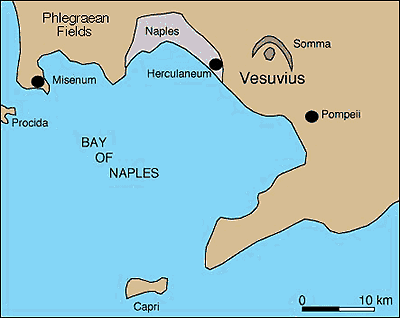
Mount St. Helens, Washington
A volcano is an opening in the Earth's surface that often forms a mountain when layers of lava and volcanic ash erupt and build up. Most of earth's volcanos are dormant or currently non-active. However there are still 600 active volcanos today. Active volcanos spew smoke lava and ash.
The most active volcano on earth today is Kilauea, Hawaii. Kilauea
does not erupt explosively but still is
powerful enough to destroy most of the towns of Kalapana Gardens.
Nobody has been hurt because of the slow
speed of lava moement.

Volcanos occur on the boundaries of faults and under hot-spots. One
famous Volcano in the U. S. of A. is
Mount St. Helens in Washington. Below is a photo of Mnt. St.
Helens. Mount St. Helens has been active for the
past 6000 years. It's most recent eruption was on October
21, 1986. The eruption had a duration of 4 days and
spewed 6.1 Million Cubic Meters of Ash and lava. Mount St.
Helens has a 74.1 Million Cubic Meter Dome. It is
the best known Volcano in the main land of the United States of
America.
Another well known volcano is Mount Vesuvius in Italy. Mount Vesuvius
is surrounded by more than 1 Million people in the city of Naples.
Vesuvius has erupted about 3 dozen times since 79 AD. Below is an
arial map of MountVesuvius. Refer to the map below.
The Somma Rim, a caldera-like structure formed
by the collapse of a stratovolcano about 17,000 years ago, is visible as
an arcuate dark area to the right and above Vesuvius. The Bayof Naples
is on the lower left. The small hook of land near the right margin of the
photo is part of a caldera of the PhlegraeanFields volcanic region. The
caldera formed about 34,000 years ago. From 1983-1985 an area of 31 square
miles (80 squarekilometers) was uplifted, in places up to 5.9 feet (1.8
meters), damaging homes, the harbor, and the tourist industry. Ultimately36,000
people were relocated.

Map of Mount Vesuvius, Italy
Volcanos can be very hazardous, in fact, many eruptions are explosive in nature. They produce fragmental rocks from erupting lava and surrounding country rock. Some eruptions are highly explosive and produce fine volcanic ash that rises many kilometers into the atmosphere in enormous eruption columns. Explosive activity also causes widespread ash fall, pyroclastic flows, debris avalanches, landslides, pyroclastic surges, and lahars. Explosivity is usually the result of gases expanding within a viscous lava. Another mechanism for explosions at volcanoes occurs when surface water or ground water enters a magma chamber. These eruptions are likely when a volcano occurs in a wet area or in the sea. For more information check out Hazards.
Volcanos erupt because of pressure of magma within the volcano gets so high that it fractures its way to the surface. When molten rock is below the surface we call it "magma" and once it has reached the surface we call it "lava" if it is flowing or "pyroclastic material" (ash, cinders, etc.) if it is being blown apart and thrown into the air. For more information on Why Volcaos Erupt goto http://volcano.und.nodak.edu/vwdocs/frequent_questions/grp10/question165.html
In the case histories below, we show you the actual signs of restless activity recorded by our volcano monitoring methods and the corresponding warning that we issued. In some cases, our warnings included specific predictions of when we estimated a volcano would erupt. At other times, our "warnings" were only updates about a volcano's activity or notices that an eruptionwas underway. Regardless of the type of warning we issued, data was gathered not only from our different monitoring instruments and field observations, but also from reliable eyewitness accounts to determine whether a volcano would erupt and when. The key to successfully predicting eruptions is to use a combination of data. For more information Click here.